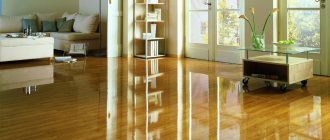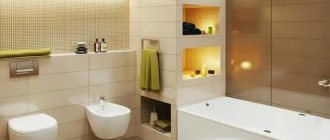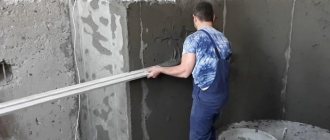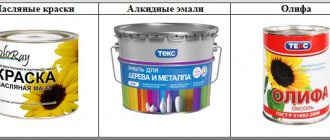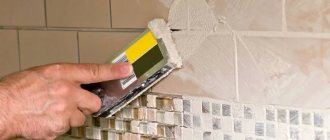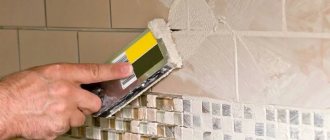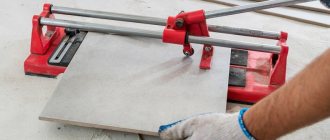Finishing work is the final stage of construction or renovation of buildings. They are performed in order to protect the structure of the house from the influence of the external environment, create comfortable living conditions, and give the house a complete look.
Finishing is carried out both inside (interior finishing work) and outside of buildings (exterior finishing work). Finishing materials must comply with sanitary and hygienic standards, withstand destructive mechanical influences, and retain their original appearance for a long time.
1.What is finishing work?
In general, construction and finishing work is a complex of works through which the following is carried out:
- Decorative design of the facade of a building or room
- Protection of the structures from which the building is constructed from the influence of the external environment (especially in the Chelyabinsk region)
- Thermal insulation of buildings and individual rooms
- Soundproofing - both the house as a whole and individual rooms
- Providing the home with the necessary utilities, such as plumbing, electrical wiring, ventilation, heated floors, Internet, etc.
Finishing work occupies a fairly significant place in the overall cycle of building construction and renovation of individual premises.
As a rule, repair and finishing work is carried out by specialists, since each type of finishing has its own nuances, and they can only be mastered with extensive experience.
In Chelyabinsk you can find a lot of companies engaged in finishing facades and premises. However, some types of work are quite within the capabilities of any craftsman.
Flooring installation
Even if the owner of the premises plans to lay linoleum or carpet, it is worth taking care to create a strong and durable foundation.
The board is an advantageous solution for finishing the floor. It is rational to use Siberian larch as a material, which perfectly resists friction and other mechanical loads. Deck and terrace boards, lining and lumber for flooring meet all current operational and aesthetic requirements. Thanks to its antiseptic properties, larch will prevent the development of fungi and pathogens. This interior decoration helps improve the microclimate in the house.
The process of laying boards begins with marking and installing the subfloor. For the substrate, a frame of wooden logs is used, which act as guides. For interior finishing work, the optimal choice is larch products with a cross section of 40X40 mm (50X50 for large rooms). A perfectly flat surface will be ensured by strong fastening of transverse and longitudinal joists. To work with larch, it is rational to use hardened anchors and self-tapping screws.
2. Rough and finishing construction and finishing works
It is necessary to separate rough or preliminary finishing or repair work from finishing work. For example, plastering of brick walls can be carried out externally and internally. In the first case, plastering may be sufficient for the final finishing of the facade of the house, in the second case, subsequent plastering of the walls is necessary. But this can also be considered rough work if wallpaper is then glued to the walls.
The same applies to carrying out communications - drilling holes, tapping walls for electrical wiring, pouring concrete screed for the floor, sealing holes in the walls or plastering the slopes of window openings.
Preparation of plaster solutions
preparation process begins with mixing a simple lime mortar. It is prepared in a box, then a small part of the solution (about 3 liters) is removed from the box. Plaster is poured into the free space and water is poured. After mixing the gypsum and water well, return the previously removed lime mortar . The mixture is thoroughly mixed again, adding water if necessary.
The resulting lime-gypsum solution should not be stirred for more than 3 minutes. The solution be applied within 6 minutes, otherwise it will begin to harden. If you have a liquid solution , then keep in mind that it will set more slowly, it will be easier to apply, but the strength of the plaster will be lower. The thick solution is difficult to apply, but the plaster will be very durable.
Read Preparation of plaster solutions
3.Types of finishing work
There are several main types of finishing, regardless of rough or fine:
- Plastering works
- Painting works
- Floor screed
- Glazing
- Cladding of buildings and premises
- Wallpapering
- Electrical installation
- Installation of plumbing, heating systems, etc.
- Flooring
- Ceiling installation
Let's take a closer look at some of them.
Plastering work is the application of special solutions to the surface, which harden and make the coating smooth, protected from external influences and suitable for final decoration. They are used at almost every stage of finishing, both external and internal. The roughest is plastering the outside of the house facade (for example, under siding), leveling the walls, preparing for putty, etc. For rough plastering work, the most common use is conventional cement-sand mortar, as the most inexpensive material. However, for each type of plastering work, depending on its complexity, a lot of ready-made mixtures are produced today.
The same applies to putty, with the help of which walls and other surfaces of the building are prepared for finishing. Sometimes the putty itself is already a finishing touch, for example, when applying decorative plaster.
When plastering and puttying work is carried out with special tools - a trowel, trowel, grout, falcon, etc. In principle, this is the simplest type of finishing work that anyone can master to save money.
applying plaster to walls
Painting work is the application of paint, varnish or other decorative coatings to the surfaces being treated (walls, ceilings, floors).
These works, as a rule, are also subject to the master who knows how to hold tools in his hands - a paint brush, roller, or spray gun. The main thing is accuracy.
You also need to be able to properly prepare the surface for painting - remove chips, scratches, apply special compounds so that the finish coating is high-quality and durable.
In addition, you need to pay attention to the fact that painting work is considered the most toxic among other finishing works and requires caution and special equipment.
Concrete work that requires a fair amount of physical training includes screeding the floor - that is, leveling it for final finishing with a board or laminate.
Typically, the mortar for pouring floors is prepared from dry mixtures, which today are produced in a large assortment. For mixing, as in carrying out plastering work, mixtures are used with special construction mixers.
mixing the solution with a mixer
More complex procedures include glazing of facades and premises. You need to have the necessary skills, the ability to use a glass cutter, and treat the work carefully to avoid injuries. However, modern houses today are most often equipped with plastic windows, the installation of which is best entrusted to specialists from the relevant companies.
Cladding work is usually the most creative part of construction. They include the installation of siding and various decorative coatings both outside, facade, and inside the building. Cladding can include mosaics, which give any surface a special aesthetic appearance, or tile stickers, which are absolutely necessary in rooms with high humidity - bathrooms, toilets, and kitchens.
wall tiling
The most common type of interior decoration is wallpapering. Today there are a huge variety of them in types, colors, textures. The production technology of modern wallpaper, its types according to the type of walls today allow even a not very skilled person to carry out pasting; the main thing is to follow all the instructions and carry out the work carefully.
wallpaper sticker
Electrical installations play a special role in the decoration of houses and premises. It is better to entrust this type of work to specialists - to eliminate injuries and so that, as they say, “everything works.”
Particularly labor-intensive procedures include installation of plumbing, heating and ventilation systems, and installation of heated floors. As a rule, these works are also entrusted to specialists, but you can master them yourself if you wish. This will save money during repairs and construction; it is only advisable to read the relevant training manuals.
You can also carry out finishing flooring yourself. The main thing is that the floor surface is perfectly flat. Modern types of linoleum, laminate, and parquet boards allow you to lay the floor quite quickly.
laying laminate
Finishing the ceiling usually comes down to plastering, puttying and sometimes painting. There are no particular difficulties when carrying out such work. However, today suspended ceilings are widespread, the installation of which is still best left to specialists.
Apartment renovation is a pleasure. It happens?
Renovating an apartment is a painstaking and sometimes very difficult task. Deciding on repairs is very difficult even for people with considerable experience and sufficient funds. This is due to the fact that many questions have to be resolved: what are the best materials to choose for modern apartment renovation? Where is the best place to find specialists? And in general, where is it better to start?
The most optimal time for repairs is the end of spring, namely April-May, especially since it will take several weeks to find specialists and coordinate the design of the project. If you want to renovate your apartment in July-August, then know that many companies have a labor shortage at this time, therefore, there is a possibility of an increase in the cost of work and failure to fulfill obligations on time. So, by starting repairs ahead of time, you will save a decent amount on building materials, have time to complete the repairs before the “peak”, and also ensure that you receive increased attention and interest from the contractor. However, do not plan to renovate your apartment for the winter, as you will inevitably encounter many technological problems.
Be that as it may, renovation of an apartment is a necessary task. You come to this conclusion with new views on the interior of your home, or when your home needs cosmetic repairs . Cases are different, but the problem of repair remains. repair problem itself, a huge number of problems arise along with it that have to be solved during the repair process.
Nowadays, in order to carry out repair work, not only large amounts of money are needed, but also serious moral efforts, because many have experienced the effect of the saying that repairs cannot be completed, they can only be suspended. Trying to save at least money, ordinary people tried to carry out repair work themselves. Not everyone was given the opportunity to find and purchase the necessary building materials, and of course, few could guess about the available innovations and new developments in the field of repair work.
PLASTER. PLASTERING WORKS
Interior decoration
There is a wide range of solutions available.
Walls
- Wallpaper. Paper, vinyl, fabric, they can be smooth and textured. Embossed and embossed rolled products are selected according to color and pattern. Liquid wallpaper looks quite original.
- Decorative plasters. Made on the basis of gypsum (for dry rooms with a stable microclimate) and cement (for ceilings and walls with varying humidity factors).
- Finishing panels in the form of decorative bricks, tiles, wood, plastic. Ceramic, glass, and tile types of slabs are actively used in the decoration of bathrooms and kitchens. Products made from natural stone look very presentable, and composite materials are cheaper.
- Coloring. Oil and enamel varieties have harmful components. In residential premises, adhesive and water-based ones are more often used.
Floors
- Parquet, deck boards, and laminate occupy priority positions in orders.
- Linoleum has gone far ahead compared to its “ancestor”. Today this coating is maximally adapted to consumer needs, so it is even ordered for children's rooms.
- Natural stone looks good in apartments and large houses. Ornaments laid out on the floor amazingly transform a home.
- Tile material is characterized by a large range of components used. Tile, metlakh tiles, PVC, clinker, porcelain tiles will allow you to find a decent material for your interior.

